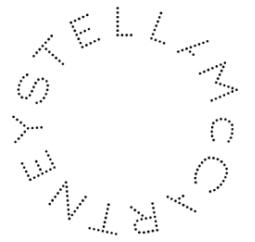
4 minute read
2.1 Analysis of Stella McCartney
INTRODUCTION TO STELLA MCCARTNEY
Stella McCartney is a luxury fashion brand with a sustainable philosophy at the core of the business. They are known for their clothing being tailored and chic, with both ready to wear collections and high fashion. Founded in 2001 they have a ‘goal of bringing a conscience to the fashion industry’, believing heavily in ‘reducing and reserving the environmental degradation’ (McCartney, 2020). Part of the business’ edge arises from Stella being a high-profile individual and the daughter of the Beatle, Paul McCartney, and Linda McCartney who was a pioneer of animal rights, environmental protection, causes that Stella, too, is focused on (McCartney, 2020). Innovation is at the core of her brand as she strives to pioneer materials that mimic those of real fur and leather (McCartney, 2020).
Advertisement
Stella has a presence worldwide distributing to 77 countries and operating in over 55 freestanding stores in fashion cities including New York and Paris, with headquarters located in London (McCartney, 2020).
Stella has proven to the industry and set an exceptional example that it is possible to be a profitable, successful and desirable brand.
TIMELESS CLEAN FUNCTIONAL TAILORED BRAND AESTHETIC
MISSION AND VALUES
”We are agents of change. We challenge and push boundaries to make luxurious products in a way that is fit for the world we live in today and the future; beautiful and sustainable”
(McCartney, 2020) BRAND VALUES
1. HIGH QUALITY LUXURY: Stella sells contemporary fashion using innovative techniques to achieve superior quality, providing pleasure and emotional value (Kapferer, 2012). They have a focus on functionality and durability (McCartney, 2020). Use of innovation, paired with sustainability, raises brand awareness and improves the position in the mind of consumers (Guedes, 2018).
2. ENVIRONMENTALLY & ANIMAL FRIENDLY: Leather, fur and feather free since 2001, responsible throughout the supply chain, partnering with foundations/charities to enforce their commitment to the environment (Wolfe, 2018).
3. SUSTAINABLE LUXURY: Aims for a circular model where product and material are kept within the subsystem; initiatives outlined in Section 2.5 and within the Ethical sphere (Appendix 1). Working with expert suppliers worldwide producing materials that mimic the properties of real materials (Wolfe, 2018).
RESOURCE BASED VIEW
(BARENY, 2007)
The Resource Based View (RBV) is an internal analysis tool used to evaluate Stella’s resources and core capabilities which enable them to flourish and sustain their competitive advantage (Barney, 2007). Stella constantly looks to utilize the firm’s resources to create value for customers for example sourcing or developing new innovative materials unique to the industry (Barney, 1991) . Stella emphasizes the importance of re-using resources within her business where possible to maximise their potential and prevent waste (McCartney, 2020).
The resources they possess are heterogeneous and their competitive superiority are outlined through Barney’s VIRO framework: Value, Rare, Imitable and Organisation (Appendix 2)
RESOURCES
• Strong presence worldwide: Stella can standardize her brand globally since developing a worldwide following and enforcing her mission and values for sustainability (McCartney, 2020). Even though stores are located in on 55 cities including New York and Shanghai, they ship worldwide via the website online.
• Sustainable since 2001 - the worlds first global fashion brand rooted in sustainability (Amed, 2015).
Invaluable customer perception of the brand and their portfolio which is difficult (time and costly) to imitate (Danziger, 2020)
• Reputation and brand awareness (product and corporate) : built upon chic contemporary tailoring, environmentally friendly practices and successful collaborations. This valuable resource which cannot be perfectly replicated and is the reason for her wide customer base and loyalty. Consumers will communicate the brand through WOM and social media if the brand has a memorable reputation, attracting new customers, especially when entering the NZmarket
• Strong financial resources: finance innovation to keep up with the dynamic environment, from constant development of raw materials and to campaigns e.g. to educate consumer on the end life of products (RealReal Programme) (Figure 2). Processing and manufacturing are the most capital intensive. Stella remains financially confident even when when she brought out the brand from Kering Group in 2018, showing an operating loss of £10 million (McCartney, 2018)
COMPETITIVE STRATEGY
Based on the Resource Based View (Section 2.3) and analysis of Stella’s business model including Figure 1, it is apparent that brand operate using a differentiation strategy (Porter, 1985). They have huge competitive scope, being one of the leading examples for sustainability and innovation in the industry (Lewittes, 2018), with an ability to constantly deliver unique products; two features of differentiation strategy (Porter, 1985). Furthermore, Stella McCartney’s own personal profile gives them a competitive edge.
Figure 1 outlines Stella’s core characteristics that set her apart from competitors. The consistency and seamless integration of these six elements have developed strong customer loyalty and memorable brand culture (Kapferer, 2012).
PHYSIQUE: - Sharp tailoring - Modern femininity - Ethical and sustainable - Innovative products - Creative
RELATIONSHIP - Long standing relationships with global suppliers - Exclusive - Passion for sustainability
REFLECTION - Style orientated - Mature and conscious individuals - Economically stable
BRAND PERSONALITY - Sustainable - Stylish - Responsible towards the environment and animal welfare - Responsibility to educate consumers and fashion brands - Unique and Trustworthy CULTURE - Brijsh - Collaborajve with ethical charijes/fashion brands - Experts in durable tailoring - McCartney family name
SELF IMAGE - Feminine - Confident - Mature - Middle class - Mindful for their impact - Expressive through fashion

Figure 1:The Kapferer Brand Identity Prism for Stella McCartney (Authors own, 2021)








